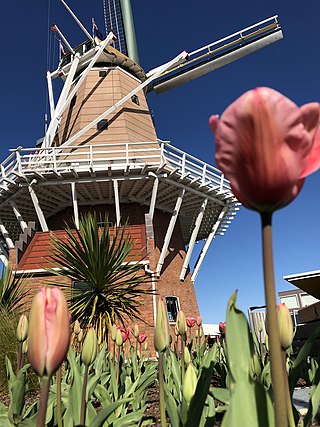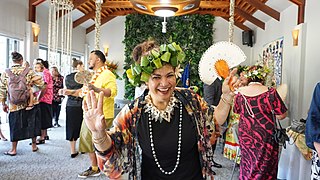| Total population | |
|---|---|
| 72,612(2018) [1] | |
| Regions with significant populations | |
| Auckland, Christchurch, Wellington, Hamilton, Tauranga | |
| Languages | |
| New Zealand English, Tagalog, Visayan languages, and/or other Philippine languages | |
| Religion | |
| Majority Roman Catholics Protestants ·other Christians · Buddhists | |
| Related ethnic groups | |
| Filipinos, Overseas Filipinos |
Filipino New Zealanders refers to New Zealanders who migrated from the Philippines or descendants born in New Zealand of Filipino ancestry.
The 1936 New Zealand census recorded six New Zealand residents born in the Philippines. The country's intake of Filipino students began to increase in 1960, under the Colombo Plan; however, even as late as 1981, there were only 405 Filipinos in New Zealand. It was not until the 1990s that highly populated regions such as Wellington and Auckland (especially the suburbs of Henderson and Mount Roskill) began to see exponential growth in their respective Filipino communities. [2] The communities themselves are known for their many Philippine-related celebrations, particularly the celebration of Philippine Independence Day every year on the Sunday nearest to 12 June. In April 2008, New Zealand's embassy indicated that they would like to increase the intake of nurses and engineers from the Philippines. [3] In 2013 the Census recorded 40,350 people, or 1.0 percent of the population, Filipino New Zealanders. [4]
There were 72,612 people identifying as being part of the Filipino ethnic group at the 2018 New Zealand census, making up 1.5% of New Zealand's population. This is an increase of 32,262 people (80.0%) since the 2013 census, and an increase of 55,674 people (328.7%) since the 2006 census. Some of the increase between the 2013 and 2018 census was due to Statistics New Zealand adding ethnicity data from other sources (previous censuses, administrative data, and imputation) to the 2018 census data to reduce the number of non-responses. [5]
There were 34,770 males and 37,845 females, giving a sex ratio of 0.919 males per female. The median age was 32.5 years, compared with 37.4 years for New Zealand as a whole; 14,838 people (20.4%) were aged under 15 years, 16,914 (23.3%) were 15 to 29, 39,123 (53.9%) were 30 to 64, and 1,740 (2.4%) were 65 or older. [6]
In terms of population distribution, 45.2% of Filipino New Zealanders lived in the Auckland region, 28.9% lived in the North Island outside the Auckland region, and 25.9% lived in the South Island. The Kaipātiki local board area of Auckland had the highest concentration of Filipino people at 5.4%, followed by the Maungakiekie-Tāmaki local board area (3.9%) and the Ashburton District (3.8%). The Chatham Islands and Great Barrier Island had the lowest concentrations, recording no Filipino people in their respective areas. [6]

The demographics of New Zealand encompass the gender, ethnic, religious, geographic, and economic backgrounds of the 5.2 million people living in New Zealand. New Zealanders predominantly live in urban areas on the North Island. The five largest cities are Auckland, Wellington, Christchurch, Hamilton, and Tauranga. Few New Zealanders live on New Zealand's smaller islands. Waiheke Island is easily the most populated smaller island with 9,420 residents, while Great Barrier Island, the Chatham and Pitt Islands, and Stewart Island each have populations below 1,000. New Zealand is part of a realm and most people born in the realm's external territories of Tokelau, the Ross Dependency, the Cook Islands and Niue are entitled to New Zealand passports.

The North Island, also officially named Te Ika-a-Māui, is one of the two main islands of New Zealand, separated from the larger but less populous South Island by Cook Strait. With an area of 113,729 km2 (43,911 sq mi), it is the world's 14th-largest island, constituting 43% of New Zealand's land area. It has a population of 3,997,300, which is 77% of New Zealand's residents, making it the most populous island in Polynesia and the 28th-most-populous island in the world.

Greater Wellington, also known as the Wellington Region, is a non-unitary region of New Zealand that occupies the southernmost part of the North Island. The region covers an area of 8,049 square kilometres (3,108 sq mi), and has a population of 550,500.

The Northland Region is the northernmost of New Zealand's 16 local government regions. New Zealanders sometimes refer to it as the Winterless North because of its mild climate all throughout the year. The main population centre is the city of Whangārei, and the largest town is Kerikeri. At the 2018 New Zealand census, Northland recorded a population growth spurt of 18.1% since the previous 2013 census, placing it as the fastest growing region in New Zealand, ahead of other strong growth regions such as the Bay of Plenty Region and Waikato.
Ruakura is a semi-rural suburb of Hamilton City, in the Waikato region of New Zealand. The University of Waikato is nearby.

Chinese New Zealanders or Sino-New Zealanders are New Zealanders of Chinese ancestry. The largest subset of Asian New Zealanders, many of the Chinese immigrants came from Mainland China, Hong Kong, Taiwan, or other countries that have large populations of Chinese diaspora. Today's Chinese New Zealand group is also composed of diasporic communities from Indonesia, Malaysia, Cambodia, Vietnam and Singapore. As of 2018, Chinese New Zealanders account for 4.9% of the population of New Zealand, and are the largest Asian ethnic group in New Zealand, accounting for 36.3% of Asian New Zealanders.

Indian New Zealanders are persons of Indian origin or descent, living in New Zealand. The term includes Indians born in New Zealand, as well as immigrants from India, Fiji, as well as other regions of Asia, parts of Africa such as South Africa as well as East Africa, and furthermore, from other parts of the world. The term Indian New Zealander applies to any New Zealanders with one or both parents of Indian heritage. Although sometimes the Indo-Kiwi definition has been expanded to people with mixed racial parentage with one Indian parent or grandparent, this can be controversial as it generally tends to remove the ethnic heritage or identity of the foreign parent or grandparent which may be termed as insensitive to those with mixed parentage, who tend to value both their Indian and non-Indian parents and grandparents.
Korean New Zealanders, also referred to informally as Korean Kiwis, Kokis or Kowis, are New Zealand citizens and residents of Korean ancestry. The 2018 New Zealand census found 35,664 Koreans in the country, virtually all from South Korea, making them the third-largest Asian population there, and more than 0.75 percent of the total population of New Zealand.
American New Zealanders are New Zealand citizens who are of American descent of American-born citizens from the United States. American New Zealanders constitute a small minority of New Zealand's population.

Dutch New Zealanders are New Zealanders of Dutch ancestry. Dutch migration to New Zealand dates back to the earliest period of European colonisation. The 2013 census recorded 19,815 people born in the Netherlands and 28,503 people claiming Dutch ethnicity.

The Auckland Region is New Zealand's most populous territorial authority and Auckland its most populous city. In the 2018 census, 1,571,718 persons declared themselves as residents of the region – an increase of 156,178 people or 11.0% since the 2013 census. The Auckland Region accounts for about one-third (33.4%) of New Zealand's population. Auckland has a large multicultural mix, including the largest Polynesian population in the world.
Sri Lankan New Zealanders, also known informally as “Sriwis”, are New Zealanders of Sri Lankan heritage living in New Zealand. This includes at least three Sri Lankan ethnic groups in New Zealand: the Sinhalese, Sri Lankan Tamil and Burghers. Sri Lankans in New Zealand span over 140 years emigration. In 2013 there were 9,579 Sri Lankans in New Zealand and increased to 16,830 by 2018.
Australian New Zealanders refers to New Zealanders whose origins are in Australia, as well as Australian migrants and expatriates based in New Zealand.

New Zealand–Philippines relations refer to bilateral relations between New Zealand and the Philippines. The Philippines has an embassy in Wellington and 2 other consulates, one in Auckland and in Christchurch and New Zealand has an embassy in Manila. Both countries are members of Asia-Pacific Economic Cooperation.

German New Zealanders are New Zealand residents of ethnic German ancestry. They comprise a very large amount of New Zealanders in terms of heritage, with some 200,000 people from the country having at least partial German ancestry. New Zealand's community of ethnic German immigrants constitute one of the largest recent European migrant groups in New Zealand, numbering 12,810 in the 2013 census. 36,642 New Zealanders spoke the German language at the 2013 census, making German the seventh-most-spoken language in New Zealand.
Asian New Zealanders are New Zealanders of Asian ancestry . At the 2013 census, 471,708 New Zealanders declared that they had an Asian ancestral background. This represents about 12% of all responses.
The 2018 New Zealand census was the thirty-fourth national census in New Zealand, which took place on Tuesday 6 March 2018. The population of New Zealand was counted as 4,699,755 – an increase of 457,707 (10.79%) over the 2013 census.
Tongan New Zealanders are Tongan immigrants in New Zealand, their descendants, and New Zealanders of Tongan ethnic descent. They constitute one of New Zealand's most sizeable ethnic minorities. In the 2013 census, 60,336 New Zealanders identified themselves as being of Tongan ethnicity with 22,413 stating that they were born in Tonga.

Pasifika New Zealanders are a pan-ethnic group of New Zealanders associated with, and descended from, the indigenous peoples of the Pacific Islands outside of New Zealand itself. They form the fourth-largest ethnic grouping in the country, after European descendants, indigenous Māori, and Asian New Zealanders. Over 380,000 people identify as being of Pacific origin, representing 8% of the country's population, with the majority residing in Auckland.